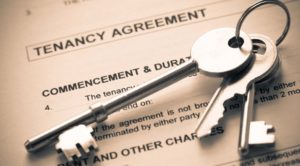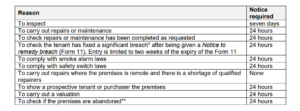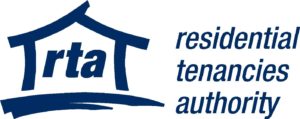
Do you know your rights and responsibilities as a tenant?
Entering a Tenancy Agreement is a big commitment for Owners, Lessors/Agents and Tenants. This legally binding agreement has many roles and responsibilities for all involved parties. It is very important for the Tenant to know their responsibilities and rights when entering the agreement as well as for the duration and upon exiting the agreement.
According to the Residential Tenancies and Rooming Accommodation Act 2008 (the Act) a Tenant has the Following rights and or obligations:
Beginning the Tenancy
A General Tenancy Agreement (Form 18a)
Also known as a Lease, The Tenancy Agreement is a legally binding contract between the Tenant and the Lessor. This agreement contains standard conditions and can contain special conditions in relation to the property including but not limited to Pets, utilities and Water Charge.
The New Tenants are to be supplied with a copy of the signed Tenancy Agreement, Copy of the Provided Keys, Fobs, Remotes, Manuals etc & if applicable – Pet Agreements, Body Corporate Guidelines and other relevant documents.
The Agent/Owner must supply each leaseholder with a set of keys for each lockable door, windows & other fixtures on the property.
Initial Rent & Bond (Form 2)
When entering a New Tenancy Agreement, a deposit equivalent to two weeks rent and a bond equivalent to four weeks rent are required. The Lessor is then required to receipt the monies as well as completing the Bond Lodgement Form (Form 2), which the tenant must also sign. The Agent/Owner then has 10 Days to lodge the Bond with the RTA (Residential Tenancies Authority). Alternatively, you can lodge your bond directly with the RTA. The remaining two weeks rent will be credited to your rent upond entering the property.
Entry Condition Report (Form 1a)
At the start of a tenancy, the Agent/Owner should ensure the property is in satisfactory living conditions and the properties maintenance is carried out. The Agent/Owner must also provide the tenants with an Entry Condition Report (Form 1a). It is important to take detailed notes (and photos) of the properties condition upon entry to avoid disputes or complications throughout or at the end of the tenancy.
The Tenants then has 3 days to complete the Entry Condition Report (Form1a) and return it to the Owner/Agent. The Owner/Agent then has 14 days to return a final copy for the tenant’s records.
Water Charges
Owners/Agents can only charge the tenants for water consumption if:
- The property is individually metered
- It is in the Tenancy Agreement
- The property meets water compliancy standards
Tenants can only be charged for State Bulk Water Charges, Water Usage Charges & cannot be charged for Sewage Uses Charges or Fixed Access Charges. The water consumption invoice should be issued out within a reasonable timeframe, allowing the tenant 30 days to pay the invoice.
During the Tenancy

Maintenance & Repairs
General Repairs:
For general repairs, the Tenant should inform the Agent/Owner in writing on any maintenance that needs to be carried out for the property. The Agent/Owner than should have the repairs carried out within a reasonable amount of time. If the repairs are not complete the tenant can issue a Form 11 Notice to Remedy Breach, in which they have a minimum of 7 days to carry out the repairs.
Emergency Repairs:
The Agent/Owner must organise and pay for any emergency repairs (Burst water pipe, blocked lavatory, gas leak, faulty/damaged electrical appliances or an issue that makes the property uninhabitable or unsafe & more). If the Agent/Owner does not respond in a reasonable time period, the tenant can call out the appropriate services to carry out the repairs up until the equivalent amount of 2 weeks rent. Once the works have been carried out the Tenant must provide a receipt or invoice for the works and have the funds refunded within 7 days or credited to their file.
Inspections & Entries
Throughout the Tenancy Agents/Owners will conduct Routine Inspection, Open Homes, Maintenance & Repairs and more on the Property. It is the Owner/Agents responsibility to provide the required notice before entering a property.
A lessor can enter the premises with or without the tenant present if the proper notice period has been carried out. The law state that the tenant cannot refuse entry to the lessor if the notice period was carried out. However, the refusal of entry to the property has grounds when the wrong notice period has been provided or the lessor enters outside the designated/agreed upon time frame provided in the Entry Notice (Form 9).
Depending on the reasoning for entry the lessor must provide a reasonable notice period. The following table from the RTA website states the notice periods that must be provided.

Rent & Arrears
Paying Rental Funds: Tenants must pay their rent on time and in accordance with the stated terms/methods in the Tenancy Agreement. If the Lessor or Tenant wishes to change payment or use an alternative method to those listed in the ACT, they must provide two other payment methods and both the Lessor and Tenant must agree in writing to the changes.
Lessors are to inform tenants of any payment methods that have extra charges in addition to their rent such as a joining or service fee. All rental funds (Cash, Credit, BPAY etc) received by the lessor must be receipted and a copy provided for the lessor & tenants records.
Rent Increases/Decreases: During a Tenancy Agreement, a rental increase can only occur if it is included in the special conditions of the Tenancy Agreement. The increase can only be implemented 6 months after the current rent amount became payable to the tenants.
The Tenant must also be provided with two months written notice with the new rental amount and the start date for the increase. A tenant can dispute the rental amount if they find the amount excessive.
Rental Arrears: If a tenant falls more than 7 days in rental arrears the lessor can issue a Notice to Remedy Breach (Form 11), Once the form is issued the arrears must be paid within a 7-day period. If the arrears are not paid by the end of the 7-day period, the agent has grounds to issue a Notice to Leave (Form 12) and terminate the Tenancy Agreement.
Ending the Tenancy
Ending/Breaking a Tenancy Agreement
The only way a Tenancy Agreement can be terminated is via the following methods:
- The Lessor & Tenant both agree in writing.
- The Lessor provides the Tenant with a Notice to Leave (Form 12) or Abandonment Termination Notice (Form 15).
- The Tenant is given a Notice to Vacate (Form 19) from a Mortgagee (e.g. Bank) who is entitled to take the premises.
- The Sole Tenant Has died and the Tenancy must be ended.
- The Tribunal makes the order.
The termination intent to terminate a Tenancy Agreement must be provided to the Lessor in writing. However, if your Tenancy Agreement has expired and you have not given your notice to terminate the tenancy and vacate you will then switch to what is known as a Periodic Lease.
Vacating the Property
When vacating, ensure the property is returned to the lessor in the same condition as per the Entry Condition Report (Form 1a).
Upon vacating the property tenants are required to:
- Remove all personal belongings
- Ensure the property has been Bond Cleaned
- Have the carpets professionally cleaned and provide receipts.
- Flee Treat the Property (If stated in your Tenancy Agreement)
- Ensure Garden is Clean & tidy
- Remove all rubbish from the property
To help ensure the bond is fully refunded, follow our Cleaning Checklist
Exit Condition Report (Form 14a)
The Exit Condition Report (Form 14a) is an important document for the Bond Refund Process. The Exit condition report is a comparison report that allows both the Lessor and Tenant to compare the condition of the property upon entry and exit.
It is important that the Tenant and Lessor both complete the Exit Condition Report to show the properties overall condition upon vacating the premises, also stating fair wear and tear on the property and any other notable items.
The agent is then to sign and complete this document and provide the vacated tenant with a copy of the report within three days of vacating the property.
Bond Refunds (Form 4)
If all parties agree on the Bond Refund the tenant, lessor or owner can submit the Refund of Rental Bond (Form 4) and submit the signed (by all parties) form to the Residential Tenancies Authority (RTA) The RTA will then refund the Bond as directed on the Form 4.
If the parties don’t agree on how the bond is to be refunded any of the parties can fill our the Bond form and submit it to the RTA without the other parties signatures. The RTA will then refund any undisputed amounts and send the other parties a notice to claim (in which they have 14 days to act upon).
Alternatively, if the parties cannot come to an agreement either parties can file a Dispute Resolution Request (Form 16) through the RTA, a conciliator will then be appointed to the participants to mediate the possibility of an agreement. If the dispute still cannot be resolved the parties can apply to go to Tribunal for a decision to be made.

For more details or information on any of the above topics feel free to contact our office or the Residential Tenancies Authority.
The Pocket Guide to being a Tenant: file:///C:/Users/admin.PRF/Downloads/RTA-pocket-guide-for-tenants-house-and-units-form-17a.pdf
https://www.rta.qld.gov.au/Forms-and-publications/Fact-sheets/General-tenancy-fact-sheets








